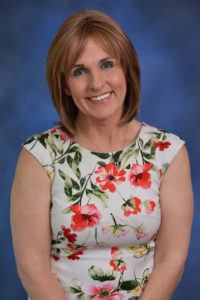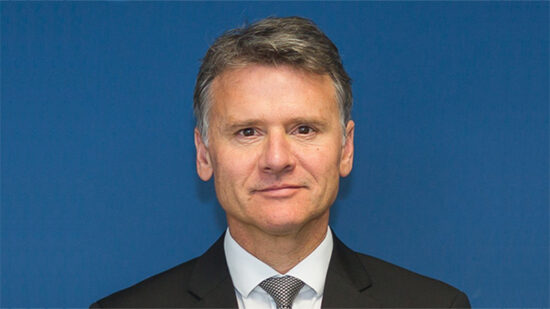It is never a child’s dream to be a financial adviser and it is also not the ambition of many adults who want a career change.
But that has to change.
The advice industry cannot leave any stone unturned and must find a way to tackle the looming talent gap, which will see thousands of advisers leave the sector over the next five years.
One pool of potential talent is second careerists.
To find out more, International Adviser spoke to several women who joined the financial advice sector after working in another profession.
Why leave?
In a bid to attract female second careerists; the sector must ask the question, why are they looking for a change?
Marlene Outrim, managing director at Uniq Family Wealth, said: “I was a probation officer for 13 years, and I actually left the job because the value was changing.
“It was becoming more policing; whereas I was trained to do more therapeutic and counselling work, and they were bringing in community policing and curfews. I didn’t want to be involved in that kind of work.”
Before settling on the advice sector, Outrim had a stint in the accountancy space but “much preferred working with people not with numbers”.
Audrey Wilding, wealth planning assistant at Bloomsbury Wealth, was working for Ralph Lauren when she had a change of heart.
“I loved working with my clients, getting to know their lives and listening to their stories. But intellectually something was missing for me.”
Her clients were often bankers, who shared stories about their journeys, which inspired her to work at Bloomsbury in operations and marketing, which increased her desire to work on the numbers side, and she “began to strategise” her future career path.
The path
Most second careerists have different stories and pathways into the sector.

Jennifer Sheanon, adviser at St James’s Place Wealth Management, worked at the Royal Mail as a postal worker for 17 years, and only took on a job at SJP after seeing an “advert in the window advertising for admin staff”.
“I walked past a local SJP senior partner practice one day and saw a job advert in the window advertising for admin staff,” she added. “I had an ongoing conversation with the principle there who encouraged me to apply to [SJP’s] academy.”
But prior to this Sheanon had “never thought” about working in the sector because her lack of a finance background made her feel it would not be “viable”.
Training problems
Sheanon went through SJP’s academy, Outrim was trained while working for an insurance company and Wilding completed a Master’s in International Business at the University of Auckland.
But access to training in the market may not be as easy as it once was.
Uniq Family Wealth’s Outrim went through her hers in 1989. “The training in those days was very good, if you went to an insurance company.”
“A lot of it has stopped now, because they used to recruit armies of people and train them because they knew a number of them would drop out and they just kept a few, and then they went on to train as advisers.
“It’s much harder now to get the training, because a number of financial advisers or financial planners are small practices, and they haven’t got the resources and the time to invest in somebody, to train them up.”
In demand?
Easing the access for second careerists to enter the sector is necessary because they can be very useful in the world of financial advice.
Especially, as they have skills from their previous roles which can be transferrable.
SJP’s Sheanon said: “People want to know that they can trust the advice that’s being given to them, which is why it’s so important that advisers develop strong relationships with their clients and understand their wants and needs.
“During my time at the Royal Mail, I spent most of my time talking and listening to people and gaining their trust. I have learnt how to channel this into the advice I give to my clients.”
So, should second careerists be more in demand?
“I think because a lot of IFAs are going to retire in the next few years, a lot of practices are going to have to look further afield for people who are returning and be prepared to invest that time and money; we are certainly looking at that,” Outrim said.
“I think most people have got some transferable skills. It’s just the employers recognising those skills.”
Sheanon added: “There’s a lot of untapped potential out there, and a lot of people from different backgrounds that would have the core skills and attitude that make a great adviser.”
Image change
All three women have worked hard to get where they are now.
But what is their advice for the industry to reach out to second careerists?
“If I’m honest, I was a bit sceptical because I was given bad pension advice back in the 1980s,” Sheanon said.
“However, when deciding to join the SJP academy, my experience inspired me to upskill and the training I received taught me what sound and considered financial advice looks like.”
Wilding said the industry needs to advertise to female second careerists that the sector allows you “to maintain a healthy work-life balance, engage our minds and gives a great opportunity for progression”.
Outrim added: “I think there is the education element that is needed for young people to encourage them to come into this kind of work.
“But I also think it’s our image. I think our image puts young women off, sometimes I think it’s the aggressive sales type. There’s lots of men in grey suits.
“It doesn’t come across as an overly attractive career. But it’s a really good career for women because it can be so flexible.”
To celebrate International Women’s Day 2020, International Adviser spoke with women across the financial advice and wealth management industry to understand their experiences and what needs to be done to support an ever-changing, diverse workforce.








